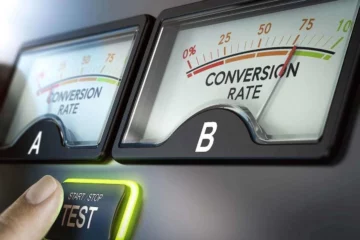Casino Not Really On Gamstop » 80+ Non Gamstop Casinos Uk 2025
Content
- Casinos Less Regulated Compared To Gamstop
- Best Gambling Dens Not On Gamstop We Reviewed This Specific Year
- In-depth Tips For Not Gamstop Casinos Uk
- Nationalbet – Overall Greatest Casino Not On Gamstop Uk
- ❓ What Are The Very Best Non Gamstop Survive Dealer Casinos?
- Slotonights
- Up To £500 Within Casino, £1000 With Regard To Crypto Deposits, £1000 For Sports
- Based And Regulated Outside Of The United Kingdom
NationalBet is the top non BRITISH casino since it mixes real money online gambling with practical bonuses, crypto support, along with a sportsbook – all-in-one spot. Players can also enjoy generous bonuses, typical tournaments, and winning prize pools that work in to the thousands. One standout feature is definitely the exclusive simply no deposit bonus — ideal for testing the particular waters. The system supports convenient obligations, including credit cards, ideal for BRITISH users.
- But for regular players who just want to place a few bets or rotate the reels for fun, GamStop can get a major head ache.
- New non GamStop gambling dens also offer nice bonuses because these people have to compete along with a plethora involving popular sites.
- Now, don’t get me personally wrong – I’m not saying hurry off and locate these if you’ve deliberately blocked your self.
- A reasonably new sort of game is the low GamStop slingo that’s a cross involving the ever-popular slots along with the ageless stop.
- Non-GamStop manufacturers and the UK’s GamStop-supporting regulators don’t include any agreement in that.
Casinos Less Regulated As Compared To Gamstop
It’s calculated established on millions or even billions of spins, so the particular percent is precise in the very long run, not within a single session. Before you dance in to a non-GAMSTOP online casino from the list, there’s something you should know. You will get more insights in the hits and misses highlighted below. Jeffbet is a top-quality non-GAMSTOP casino owned or operated by ProgressPlay Small. It is well-known for its tight security, reputable guard licensing and training, and an extensive array of payment options. With several good options, picking a non-GAMSTOP online casino requires some work.
Best Gambling Dens Not On Gamstop We Reviewed This Year
Our casinos not covered by GamStop ranking takes times and weeks of painstakingly selecting and analysing gambling internet sites based on a lot of criteria. So many of us feel obliged in order to share our individual top-rating along with you. There are a several casinos we would certainly like to suggest in this situation scenario. This web site offers amazing marketing promotions, even better game titles, and everything kinds of other perks you may want to check out out and revel in. It is a secure and extremely well-known approach to many gamblers in britain. Many overseas websites accept gamblers which are part regarding the register, allowing them to play without any kind of restrictions.
In-depth Advice For Not Gamstop Casinos Uk
Most operate underneath offshore regulators like Curaçao or Anjouan. While they aren’t UKGC-regulated, they fulfill international standards intended for security, fairness, and responsible gambling. I’ve tested many approaches — some are fast, others offer additional privacy or decrease fees. But they don’t all work the same, particularly when it comes to be able to withdrawals. Pitbet Casino is perfect regarding bonus hunters and UK players that enjoy regular returns. With a cashback-focused structure and a couple of, 500+ slots, Pitbet sticks out in the non GamStop BRITISH casino space while a fun, no-KYC alternative to UKGC sites.
Nationalbet – Overall Ideal Casino Not On Gamstop Uk
Plus, withdrawals happen to be fast, so a person won’t wait very long to get your cash. Every online casino provides a different concentrate — some happen to be packed with slot machine games, others shine throughout live dealer game titles or sports gambling. They offer solid player protection, responsible gambling tools, in addition to clear compliance. But as a swap, you find smaller bonuses, slower withdrawals, and constrained game options. Even though non-GamStop gambling dens operate outside of the UKGC’s jurisdiction, it doesn’t mean they’re unregulated.
❓ What Are The Greatest Non Gamstop Survive Dealer Casinos?
Other cryptocurrencies worth considering are Ethereum, Solana, Litecoin, and Tether (USDT). These regulators don’t ask operators to join GamStop, whether or not their casinos can be found in the UK. Thus, what you’ve acquired listed here is a situation wherever you can access licensed, legal, very safe online casinos.
Slotonights
Simply enter the basic details—email, mobile phone, name—and start enjoying. Some even permit you deposit and even https://wreckbet-casino.org.uk play before validating, a rare perk in today’s managed gambling world. Palm Casino is best for sports enthusiasts and casino participants alike.
Up To £500 Within Casino, £1000 With Regard To Crypto Deposits, £1000 For Sports
Matt will be a casino in addition to sports betting specialist with over a couple of decades’ writing in addition to editing experience. He loves getting in to the nitty gritty of how internet casinos and sportsbooks actually operate in purchase to make solid… It’s an older popular place exactly where many website masters and players chat every day. Recently, the moderators opened the thread where they blamed sites which are promoting Gamstop free casinos. So there, you can take an appearance at all locations that they’ve located on the Internet and gamble right now there.
Based And Regulated Outside The United Kingdom
We’ve find handful regarding casinos employing this certificate, including some of which cater specifically to crypto users and high-rollers. Over the training course of two complete weeks, we examined each casino across different timeframes, which include weekends and late-night hours, to discover how they performed. We tested on portable and desktop, applied both crypto plus card deposits, and spoke with buyer support (sometimes intended for hours) to gauge their reliability.











